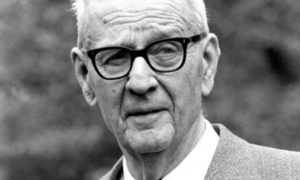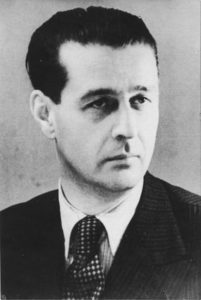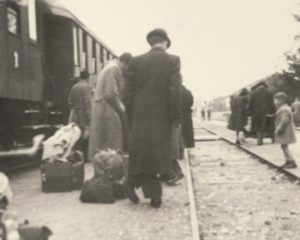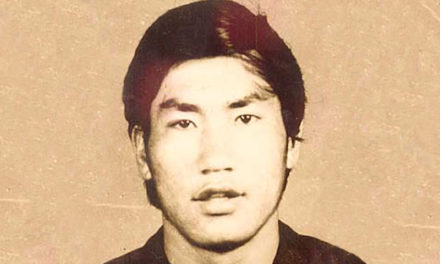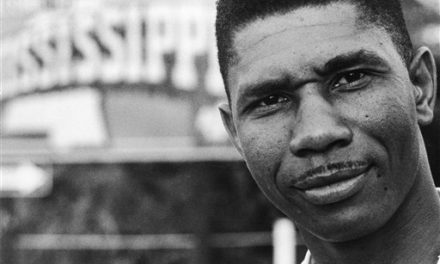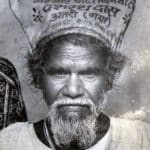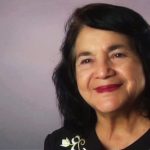The Heroic Impostor
Who would expect an escaped political prisoner would pose as a Spanish diplomat during WWII to save the lives of people in a country not his own? Giorgio Perlasca had the option to sneak away and pursue his personal safety, yet he chose to remain in order to give hope and heroic aid to over five thousand Jews.
In November of 1943, Giorgio Perlasca’s native Italy unconditionally surrendered to the Allied forces while he was working in Hungary with the Italian Trade Commission. Under the power of Germany, Hungarian officials took Giorgio as a prisoner to be held with other foreign diplomats.
Using a fake medical pass and the aid of a Swiss driver, Giorgio escaped his internment and traveled to the Spanish embassy in Budapest. In his youth Giorgio had served in Spain’s civil war and had been offered the protection of a Spanish citizenship, he asked for it now in order to get a Spanish passport.
Under the direction of Ángel Sanz Briz, the Spanish embassy was already working with neutral nations like Switzerland, Sweden, and Portugal to help secure safe escape for Jews. Giorgio (now using the Spanish name “Jorge”) chose to stay and help Ángel continue the rescue effort. He had witnessed what was happening to Jews during his business travels to other nations, and already over 400,000 Hungarian Jews had already been detained or deported to Auschwitz.
Eventually, the Hungarian government realized that the Spanish officials had been harboring Jews in their houses and embassies and they began raiding the homes of diplomats. As Budapest fell into turmoil, Ángel Sans Briz and other officials received orders to vacate and did so immediately. He left behind a note to Giorgio begging him to follow by using his newly neutral citizenship to escape.
Knowing that without protection, many Jews would be killed, Giorgio decided to stay. Hungarian and German officials ordered the embassy to release all refugees. Despite the risk, Giorgio attended a meeting and announced that Sanz Briz was simply on leave. He took with him a letterhead he forged that appointed himself as the replacement Spanish ambassador. The German and Hungarian officials believed Giorgio’s appointment and more importantly his tale that Spain would retaliate if forced to turn over their refugees. He was allowed to continue working.
“I couldn’t stand the sight of people being branded like animals . . . I couldn’t stand seeing children being killed. I did what I had to do.” – Giorgio Perlasca
The next few months Giorgio helped organize the hiding, feeding, and transport of thousands of Jews. He made accommodations to preserve the health of those in his care by securing medicine and food on the black market. During those months, Giorgio also devised and tested a system using an old Spanish law that allowed Spanish born Jews full citizenship and protection. Giorgio began successfully issuing fake safe-conduct passes claiming that the Hungarian Jews were Spanish born Jews. The passes read ”The relatives of all Spaniards in Hungary require their presence in Spain. Until we are able to reestablish communications and the journey back is possible, they will remain here under the protection of the government of Spain.”
In the next 45 days, Giorgio Perlasca would team up with Sweden’s Raul Wallenberg, Angelo Rotta from the Vatican and Friedrich Born from the International Red Cross to vouch for Jews across Hungary. Together they helped organize and secure the safe escape of thousands of Jews. When the Soviet forces gained control of Hungary the following month, Giorgio traveled to all of the safe houses he had set up telling them they were now safe.
A man of bold character, Giorgio carried himself as if he was a protected diplomat. He continually and openly risked his life to save others. One day in December of 1944, Giorgio snatched a brother and sister on a train platform who were destined for a concentration camp. A Nazi lieutenant colonel ran over to him with his revolver drawn, ordering Giorgio to release the boys. Giorgio stood his ground and successfully argued for the children’s custody. Giorgio was later informed that he had challenged the infamous Adolf Eichmann. (Eichmann was the architect and lead organizer of the mass deportations to extermination camps in Eastern Europe.)
Later Giorgio appeared when some Nazi soldiers were leading a group of Jews to execution and used his bold charisma and feigned authority to demand that the soldiers release the prisoners to his care. He bested their arguments and eventually, they walked away leaving the Jews behind.
Giorgio returned to his family in Italy and lived quietly among many Italians who were trying to forget the horrors of the holocaust. That was until 1987 when a group of rescued Hungarian Jews finally found Giorgio and began telling others of his heroic actions.
In those five years before his death, Giorgio Perlasca would receive many honors for the heroic and selfless actions the world had nearly forgotten. He died at home as a celebrated hero on August 15th, 1992. A Jewish doctor who was one of the rescued affectionately wrote, “On this occasion, we want to express the affection and gratitude of the several thousand Jews who survived, thanks to your protection. There are not enough words to praise the tenderness with which you fed us and with which you cared for the old and the sick among us. You encouraged us when we were close to despair, and your name will never be omitted from our prayers. May the Almighty grant you your reward.”


